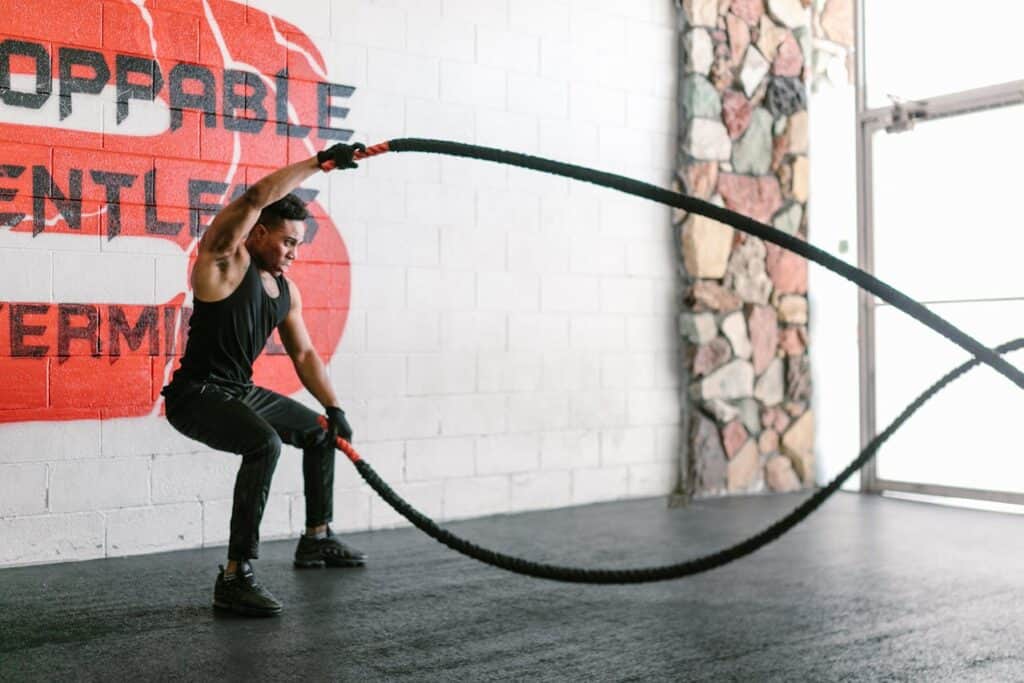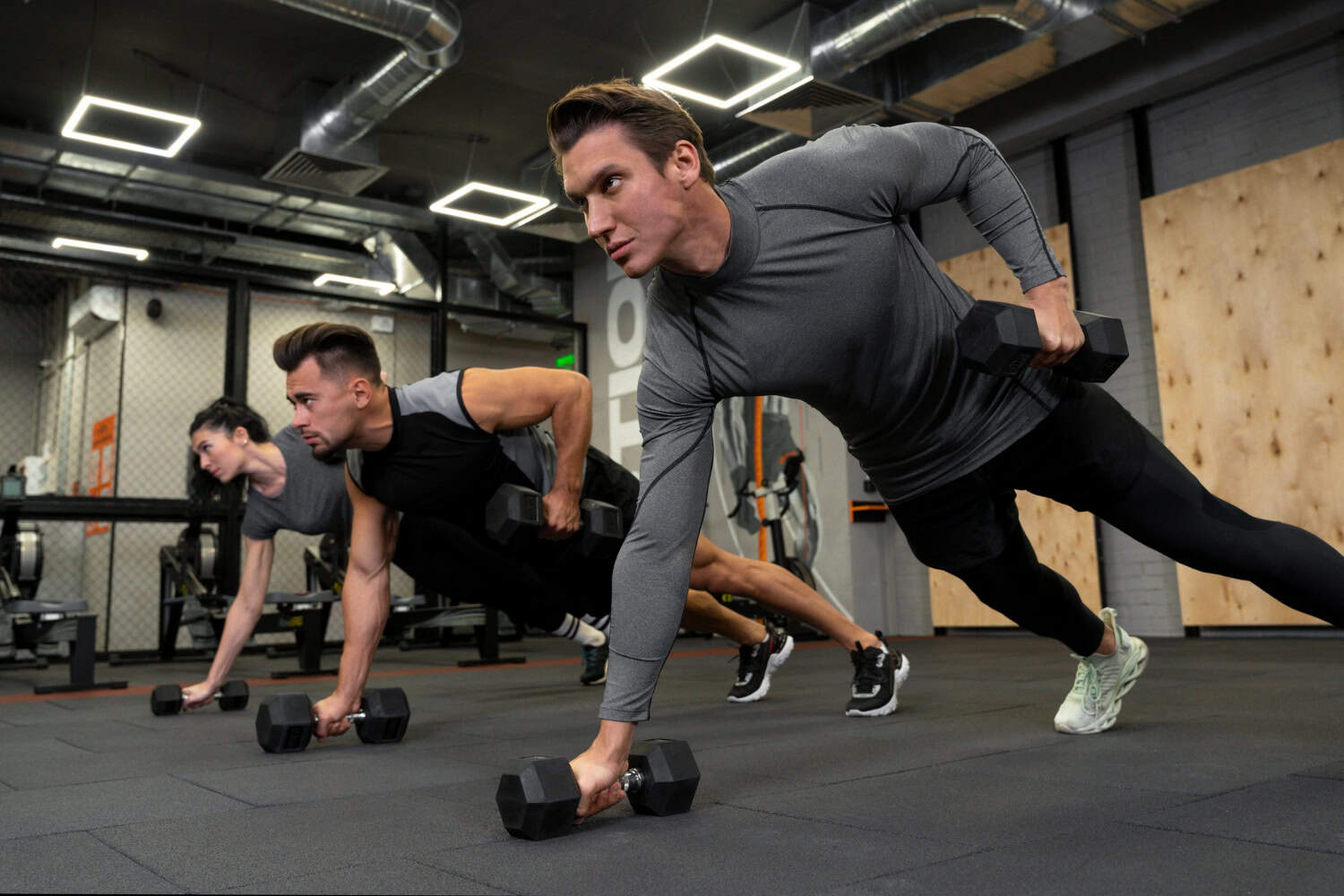Finding time to workout might be difficult. Work, family, and personal obligations might make it difficult to fit in an exercise. However, functional exercise is a practical and time-saving strategy that may be easily integrated into your everyday routine. Functional fitness, as opposed to traditional workouts that target specific muscle groups, improves movement patterns used in everyday living. Whether you want to enhance strength, mobility, or endurance, this strategy is a great way to stay healthy without spending hours at the gym.
What is Functional Fitness?
Functional fitness is a training method that focuses on movements that mimic real-life activities. It involves exercises that improve coordination, strength, endurance, balance, and flexibility. Unlike bodybuilding, which targets specific muscle groups, functional training engages multiple muscles simultaneously to help you perform everyday tasks with ease.
For example, lifting groceries, bending to pick up objects, or climbing stairs all require a combination of strength, balance, and flexibility. Functional exercises, such as squats, lunges, and push-ups, train your body to handle these daily tasks more efficiently.
By incorporating a functional training routine into your schedule, you can enhance your overall fitness while optimizing the time spent exercising.

Benefits of Functional Fitness for a Busy Lifestyle
Functional fitness provides a variety of benefits that extend beyond enhancing physical appearance. It improves mobility, strengthens the body for daily work, and increases endurance. Whether you’re a busy professional, a parent juggling several duties, or someone who finds it difficult to devote extended hours to the gym, functional training offers a practical and efficient way to stay active without taking up too much time.
1. Time-Efficient Workouts
Many functional exercises engage multiple muscle groups at once, allowing you to get a full-body workout in a shorter time. This makes it ideal for those who have a packed schedule but still want to stay active.
2. Improves Daily Movements
Functional fitness is intended to improve real-world movements, making routine chores easier. Carrying heavy bags, reaching for high shelves, or playing with children are all exercises that improve your strength and endurance for regular tasks.
3. Minimal Equipment Required
Most functional workouts can be done with just your body weight or a few basic tools like resistance bands, dumbbells, or kettlebells. This makes it easy to perform at home, in the office, or while traveling.
4. Enhances Core Strength and Stability
A strong core is essential for maintaining balance, posture, and overall strength. Functional exercises like planks, squats, and deadlifts engage your core, leading to improved stability and reduced risk of injuries.
5. Boosts Metabolism and Burns Calories
Functional workouts frequently contain high-intensity moves that raise your heart rate, allowing you to burn calories more efficiently. Even short, time-efficient fitness regimens can help with cardiovascular health and weight management.
How to Fit Functional Fitness into Your Busy Schedule
Finding time to exercise might be difficult, but functional fitness does not demand a significant time commitment. Staying active without spending hours at the gym is possible by focusing on workouts that improve everyday motions. Whether you’re a busy professional, a parent, or someone with several obligations, including functional exercise into your daily routine can help you stay healthy and strong without disrupting your schedule.
1. Make Fitness a Priority
Just like any important task, schedule your workouts into your daily planner. Even a 15-minute session can make a difference when done consistently. Treat it as a non-negotiable part of your day.
2. Use Short, High-Intensity Workouts
Instead of spending hours at the gym, opt for quick workouts that deliver maximum results in less time. High-intensity functional workouts, such as circuit training or interval-based routines, can be completed in 20 minutes or less.
3. Incorporate Movement Throughout the Day
If you can’t find time for regular workouts, try incorporating more movement into your daily routine. Walk while on the phone, use the stairs instead of the elevator, or perform bodyweight exercises during work breaks.
4. Combine Strength and Cardio
A well-rounded functional training routine includes both strength and cardiovascular exercises. Perform movements like kettlebell swings, jump squats, or burpees to get the best of both worlds in a short timeframe.
5. Do Home Exercises
One of the most advantageous aspects of functional training is that it can be done anywhere. Home workouts such as lunges, push-ups, and planks take up little room and can be completed whenever you have a few minutes to spare.
Sample Functional Fitness Routine for a Busy Lifestyle
This quick, full-body functional workout takes just 20 minutes and can be done at home with no equipment.
Warm-Up (5 Minutes in total)
Perform each of these exercises for 1 minute.
- Jumping jacks
- Arm circles
- Bodyweight squats
- High knees
- Leg swings
Workout Routine (15 Minutes)
Perform each exercise for 45 seconds, then rest for 15 seconds. Complete three rounds.
- Squats
- Push-ups
- Lunges
- Plank to shoulder taps
- Burpees
- Glute bridges
Cool-Down (5 Minutes)
- Forward fold stretch
- Hip flexor stretch
- Shoulder stretch
- Child’s pose
- Deep breathing exercises
By consistently following this routine, you can achieve a time-efficient fitness regimen that fits seamlessly into a busy schedule.

Tips to Stay Consistent with Your Functional Training Routine
Maintaining an exercise program can be difficult, especially when life gets busy. However, developing consistency with functional fitness does not need spending hours at the gym. Small, durable improvements to your everyday behaviors might help you stay on track and integrate fitness into your lifestyle.
1. Set Realistic Goals
Aim for short, achievable workouts rather than committing to long sessions that might not fit into your schedule.
2. Track Your Progress
Keep a fitness journal or use an app to log your workouts. Seeing your progress will keep you motivated.
3. Mix It Up
Avoid workout boredom by switching up exercises and trying different functional movements. Incorporate resistance bands, medicine balls, or stability exercises for variety.
4. Find a Workout Buddy
Having a partner to exercise with can increase accountability and make the workouts more enjoyable.
5. Be Flexible
Life is unpredictable, so adapt your workouts when necessary. If you miss a session, make up for it by adding extra movement throughout the day.
Conclusion
Integrating functional fitness into a hectic lifestyle does not have to be difficult. You may stay fit and active without wasting time by focusing on fast workouts, time-saving fitness tactics, and at-home exercises. A well-structured functional training routine boosts strength, balance, endurance, and overall health, making daily tasks easier and lowering the chance of injury.
No matter how packed your schedule is, making fitness a priority—even in small ways—can lead to significant long-term benefits. Start today with short, practical workouts, and you’ll soon see how functional training can enhance your life.























